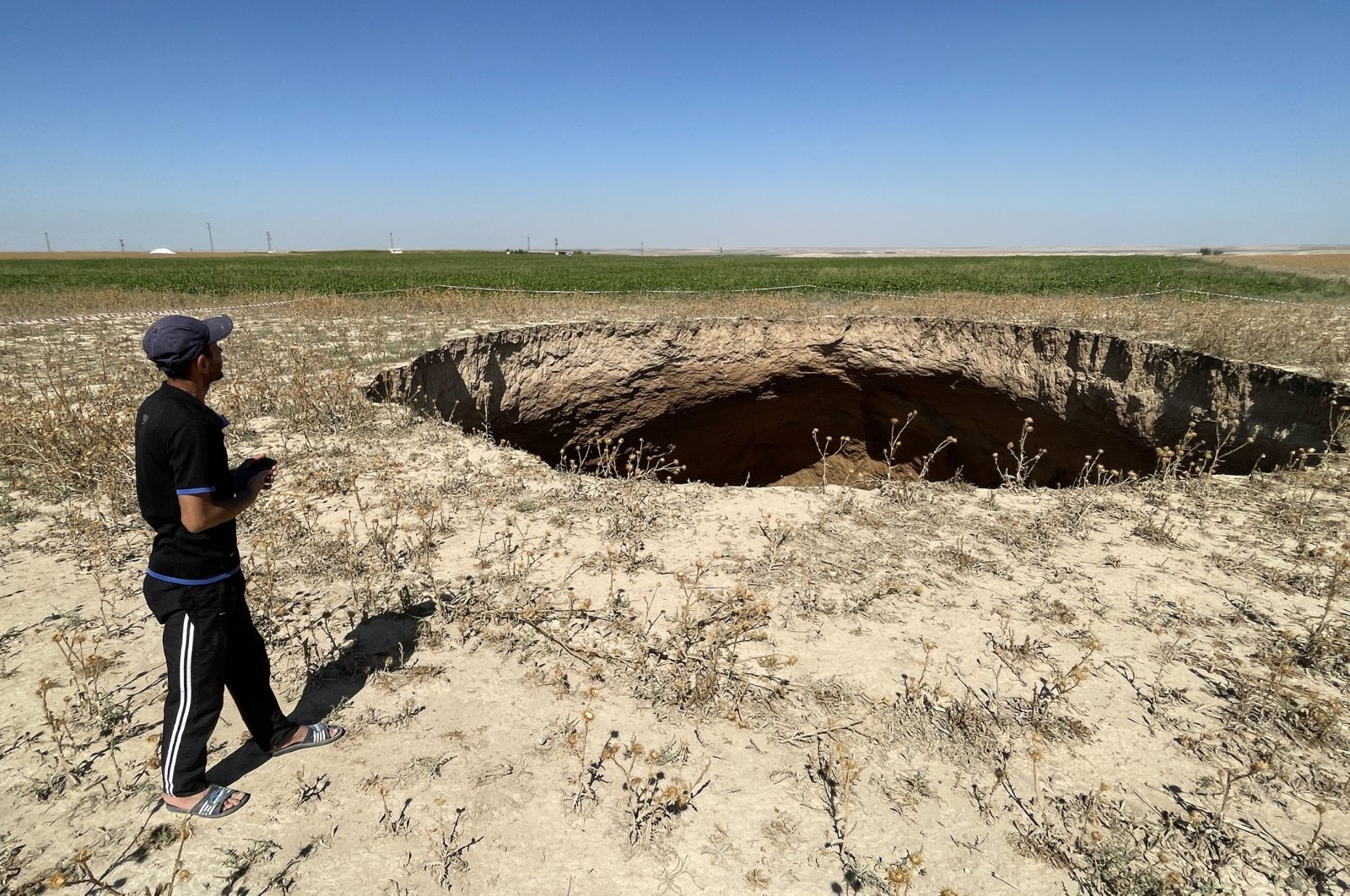
The proliferation of sinkholes in Türkiye, a consequence of the gradual dissolution of underground limestone over time, leading to voids and ground collapses, is witnessing a rapid surge.
Professor Fetullah Arık, director of the Sinkhole Application Research Center at Konya Technical University, told Anadolu Agency (AA) that the country now grapples with over a thousand of these geological formations.
Arık attributed the rise in sinkhole formations to factors such as drought and extensive underground water utilization, with a particularly alarming situation observed in the Konya Closed Basin. Here, over 80% of underground and surface water is channeled for agricultural purposes, Arık emphasized, explaining that the basin consumes 2.45 billion cubic meters (bcm) of water annually, resulting in an average water deficit of 500 million cubic meters per year.
"This leads to a significant reduction in our underground water resources. The primary cause is not only agricultural irrigation but also global climate change and drought. We are not receiving the desired amount of rainfall, as the basin receives only half of the national average," he explained.
In addition to Konya's Sinkhole Application Research Center, the Disaster and Emergency Management Authority (AFAD) is closely monitoring the sinkhole situation. Arık underscored that the groundwater level is diminishing by approximately 2 meters each year, warning of a potential severe water shortage in the future.
"Within AFAD's Disaster Risk Research System, around 600 sinkholes have been documented in Konya. Sinkholes that occur every year are recorded here, but there are thousands of deformation and subsidence structures in the region that may be a harbinger of sinkholes or have formed in the past," he noted.
The proliferation of sinkholes is not confined to Konya, they have also emerged in various other cities, including Karaman, Aksaray, Niğde, Nevşehir, Eskişehir and Ankara, Arık said. Moreover, there's been a noticeable uptick in sinkhole occurrences in the neighboring Sakarya Basin, located northwest of Konya.
"In addition, we see that the number of sinkhole formations has increased in regions where carbonate rocks, as well as rocks such as gypsum and halite (rock salt), are common in the country," he added.
"We are aware that there are hundreds of sinkholes on these gypsum series in regions of Sivas, Çankırı, Çorum and Yozgat regions. We see sinkhole formations in many provinces from the east to the west of the country. We see that sinkhole formations are becoming widespread in Batman, Siirt, Diyarbakır and Erzurum, and as far as Manisa in the west," he explained.
Arık asserted that drought remains the leading cause of sinkhole formation throughout Türkiye, while in Konya and its neighboring provinces, groundwater utilization emerges as a chief contributor.
Mentioning that the sinkholes in the Konya Closed Basin attract attention with their abundance and size, Arık said: "Sinkholes not only draw scientific curiosity but also concern due to their potential hazards. We anticipate the arrival of professor Francisco Gutierrez, a renowned global expert in sinkhole research, and his team to evaluate the situation in Konya."
